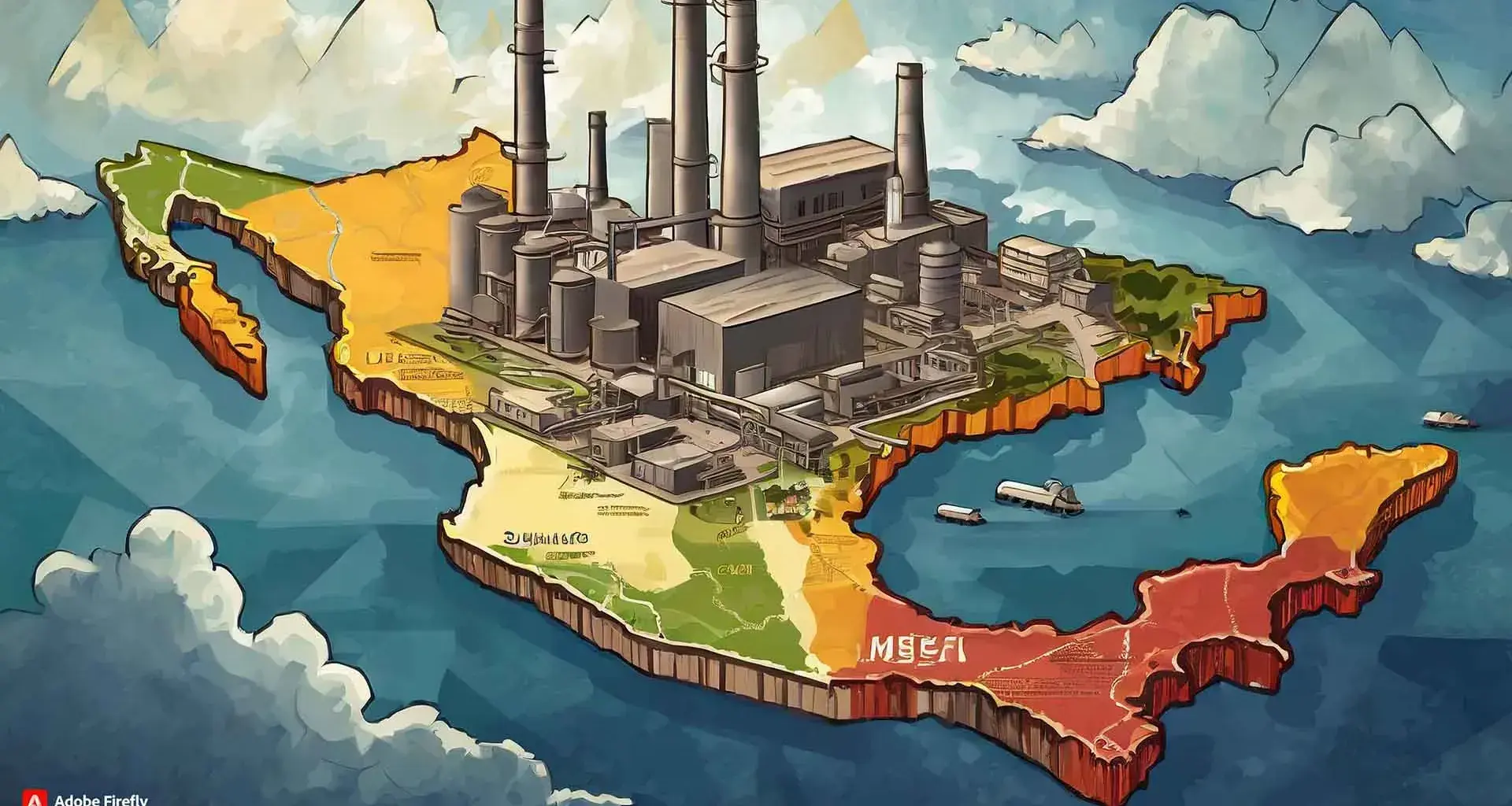What is nearshoring? What are the challenges and opportunities for Mexico in 2024?
Since 2015, Mexico has increasingly been regarded as one of the most attractive destinations for companies seeking to relocate their production centers by taking advantage of the global phenomenon known as nearshoring.
Osmar Zavaleta, associate dean of research at Tec de Monterrey’s School of Business and EGADE Business School, who was also involved in drawing up a report on this phenomenon, lists the main challenges and opportunities for the country.
- What is nearshoring?
- The challenges of nearshoring in Mexico
- Nearshoring opportunities
- Opportunities for technology entrepreneurs

What is nearshoring?
Nearshoring is a strategy for outsourcing services that involves the transfer of some or all business or information technology (IT) operations to a provider located in a nearby country.
This has brought about the relocation of production centers from places such as China to Mexico to be closer to the United States, one of the largest consumer markets in the world.
Consequently, geographical proximity makes shipping between suppliers and customers faster and more efficient, which has a positive impact on productivity and on national economies.
This phenomenon gained momentum with geopolitical and economic tensions between the United States and China, supply chain disruptions caused by the COVID-19 pandemic, and the war between Russia and Ukraine, among the main causes.
The challenges of nearshoring in Mexico
The researcher lists some of this year’s nearshoring challenges in Mexico as:
- Articulating value chains
One of the main challenges is to define an industrial policy that allows value chains in the center and south of the country to be integrated with those in the north.
Nuevo León, Chihuahua, Baja California, Coahuila, Tamaulipas, Jalisco, Querétaro, Guanajuato, probably the State of México, and Mexico City are naturally the most likely to reap the benefits of this phenomenon, remarked Zavaleta.
“(However,) we are faced with the challenge of integrating companies in the south-southeastern states into these value chains. Moreover, value chains that include the participation of SMEs and large companies must also be set up.”
- Investing in electricity infrastructure
Another challenge is to supply industrial electricity to all companies seeking to set up operations in the country.
The specialist also underscores the need to redefine the country’s energy strategy with an emphasis on clean energy sources.
“The country must allow and encourage the generation of electricity from clean sources and redefine its electricity generation matrix.”
- Insecurity
“Public and governmental institutions, as well as companies, need to define a security strategy that does not exist in the country at the moment,” said the academic.
If they coordinate their actions effectively, this could empower the attraction of foreign direct investment in nearshoring.

- Water shortages
Another very important challenge that the dean perceives is the issue of water shortages, which is an extreme problem in states like Nuevo León but also affects other parts of the country.
“An industrial policy has to be designed that somehow distributes foreign investment flows evenly to states where the water issue is not a problem.”
He also remarked that, in addition to making sure infrastructure is not a problem, these states should be made attractive to businesses.
- Insufficient developed talent
Furthermore, Zavaleta noted that industrial policy should be geared towards developing the talent required.
This will be conducive to the even distribution of investment flows and the participation of small and medium-sized companies.
- Pollution and mobility
There are serious pollution and mobility problems in certain states like Nuevo León, which suffers from poor air quality.
- Greater investment in digital technology
As international trade, essentially with the United States, begins to show an upward trend, greater investment in digital technology will be needed to make operations like customs processes more efficient in border areas.
- SME financing
Zavaleta also stressed that small and medium-sized enterprises (SMEs) require financing to scale up their operations, in addition to technical support, technology transfer, process standardization, access, and certifications.
“Financing is important to guarantee product quality, thereby ensuring that companies setting up operations here will have access to chains.”

Nearshoring opportunities in Mexico
There will also be opportunities for the country in 2024, such as:
- Job creation
Accelerated foreign direct investment flows are an opportunity to create more and, above all, better paying jobs.
For this to happen, organizations must get their people ready to adapt to new requirements and have the talent to get involved and take advantage of this phenomenon.
“This is aimed at the automobile industry (car and auto parts manufacturing) and the following sectors: household appliances, medical equipment, electronics, computers, aerospace, metal-mechanics, machinery, and equipment in general.”
- Promotion of STEAM university degrees
Nearshoring represents a great opportunity for those studying information technology or for degrees in science, technology, engineering, arts, and mathematics (STEAM).
This opens up opportunities in data science, software engineering, business studies, business management and administration, service management, science, technology, engineering, and mathematics, among others, he said.
“Overall, it’s an excellent time for young people studying a STEAM degree or anyone who decides to develop a career in this area.”
Opportunities for technology entrepreneurs
Furthermore, Zavaleta recommended the following, specifically for technology-based entrepreneurs:
- A service focus
Zavaleta called on everyone to start thinking about cross-cutting services, financial services, logistics services, real estate services and services in the food industry.
- Market analysis
The academic recommended to prospect and conduct market studies in the different sectors targeted by the investment and to define the financing needs of the line of business in question.
For example, they could see what Mexico has to offer through development banking.
- Search for resources
This involves the search for financial resources, training, and technology transfer support.
The report
Dr. Zavaleta presented his report, entitled “Nearshoring: Challenges and Opportunities for the Integration and Strengthening of Global Value Chains in Mexico.”
This study was prepared by more than 20 Tec de Monterrey professors and was presented on September 25 at the EGADE Business School auditorium in Monterrey.
The authors of the report comprise professors from the School of Business, the EGADE Business School, the School of Government and Public Transformation, and experts from the institution.
YOU MAY ALSO WANT TO READ:





